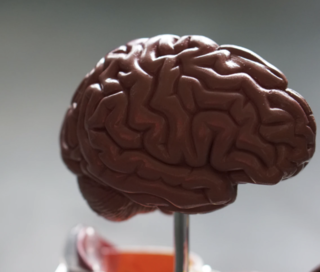Diet
How Tom Brady Improves His Processing Speed
Who doesn’t want to be like Tom Brady?
Posted March 25, 2021 Reviewed by Jessica Schrader
Tom Brady may not be the most mobile or swift quarterback in the NFL, but his brain might have the fastest processing speed of any of his peers. He is getting faster and better. He just signed a new contract guaranteeing he will play until the age of 45 and perhaps until he turns 48! Film analysis of Brady’s play demonstrates how his capacity for processing speed contributes to his ongoing success.
What makes this capacity remarkable is that processing speed tends to slow down as we age. Most football players are on the downhill slope of their careers by their late 20s. Even quarterbacks, who often play until their mid 30s, don’t move or react as fast as they did earlier in their careers. During a disappointing 2019 NFL season, many fans, including those of the New England Patriots, believed that Tom Brady had finally reached the end of the line. But during the 2018 season, at the age of 41, Brady had led the New England Patriots to a win in Super Bowl LIII (53). However, in the following season, not only did many fans think that the game was too fast for him and was passing him by, but apparently so did his former coach. (And to be fully transparent, so did I.)
Brady has proven all these skeptics wrong. He chose to leave the New England Patriots, join the Tampa Bay Buccaneers—a young team with no history of winning—and demonstrate that you can get older and faster. And according to Brady, part of his secret (which he is happy to share with you in his book, The TB12 Method) is to combine brain training techniques with diet, exercise, meditation, pliability training, and a growth mindset. One important component of his training focuses on improving the processing speed of his brain. Based upon the results of Super Bowl LV, it makes sense to look at how Tom Brady improves his processing speed.
The brain training component of the TB12 Method is of great interest, not only to football players but also to adults who are feeling their age and to parents of kids who struggle to learn or demonstrate signs of slow processing speed. Brady is not suggesting that it is solely his capacity to process information quickly that led to his most recent Super Bowl victory. As is his wont, he likes to spread the credit around—to his teammates, coaches, and family, and to the entire TB12 Method. Nevertheless, much of the TB12 Method as a tool to reduce the impact of aging is supported by research. There is solid scientific evidence for the benefits of a thoughtful diet, exercise, meditation, and yoga (which, while not the same as Brady’s pliability training, is a close equivalent). However, there remain many questions about the value and applicability of brain training to improving processing speed and real-world experiences.

Studies do provide evidence that brain training can help with sports performance. There is compelling evidence that computerized working memory training (which can help Tom Brady recall previous defensive formations more efficiently) can be helpful under specific conditions, although the generalization of these trained skills may be limited. Many studies suggest how video games and brain training programs can improve processing speed, but there is limited data on how applicable these new skills are in real life.
Transferring, or generalizing, skills learned in one setting to another is always difficult, whether the intervention takes place via computerized brain training, in a traditional classroom, or in the office of a therapist. The more similar the training is to the place where it will be applied, the easier it is to achieve generalizability. Imagine trying to learn to hit a tennis forehand just by reading a book about it or watching instructional videos. A closer approximation and probably more effective training method is playing a virtual tennis game where you swing a facsimile of a racket and get feedback. Or, even better, having a real-life tennis lesson where a coach feeds you balls to hit your forehand, followed by a lot of practice. Most likely you’d transfer the skills from your live tennis lessons best to an actual tennis match.
Psychologists refer to the link between tennis lessons and using the skill in a game as “near” transfer, where the task is to apply what one has learned in a setting similar to or “nearly” like it. But please keep in mind, training in one aspect of a complicated task (learning to hit a forehand) will not make you proficient at tennis. You’ll need to do what Tom Brady does: combine your training with many other diet, exercise, practice, and cognitive strategies to improve your game. Improving real-world skills solely by playing video games or via brain training is more difficult because most gameplay does not involve the complexity of real-world activities. Unfortunately much of the research (and often the marketing of these products) creates an expectation that one simple intervention will transform your abilities in multifaceted tasks.
While much of the relevant research does demonstrate limited to modest levels of generalizability for improving working memory or most other cognitive skills, there appears to be more support for using technology and games for enhancing processing speed. Research has documented how action-based video games lead to improvements in a variety of processing-speed tasks. A study of casual games conducted at the University of Illinois by Pauline Baniqued and colleagues demonstrated that attention capacities and processing speed were improved by modest amounts of casual gameplay. A series of studies conducted using tools developed by Posit Science (partners in TB12 BrainHQ) have demonstrated real-world improvements in processing speed. Brady’s recent Super Bowl LV performance lends additional credence to the use of brain training to improve processing speed.
So whether your goal is to keep your quick wit or to quarterback your team to the Super Bowl in your 40s, maybe it’s worth a try to check out some action video games or brain training tools that might improve your processing speed. After all, who doesn’t want to be like Tom Brady?


